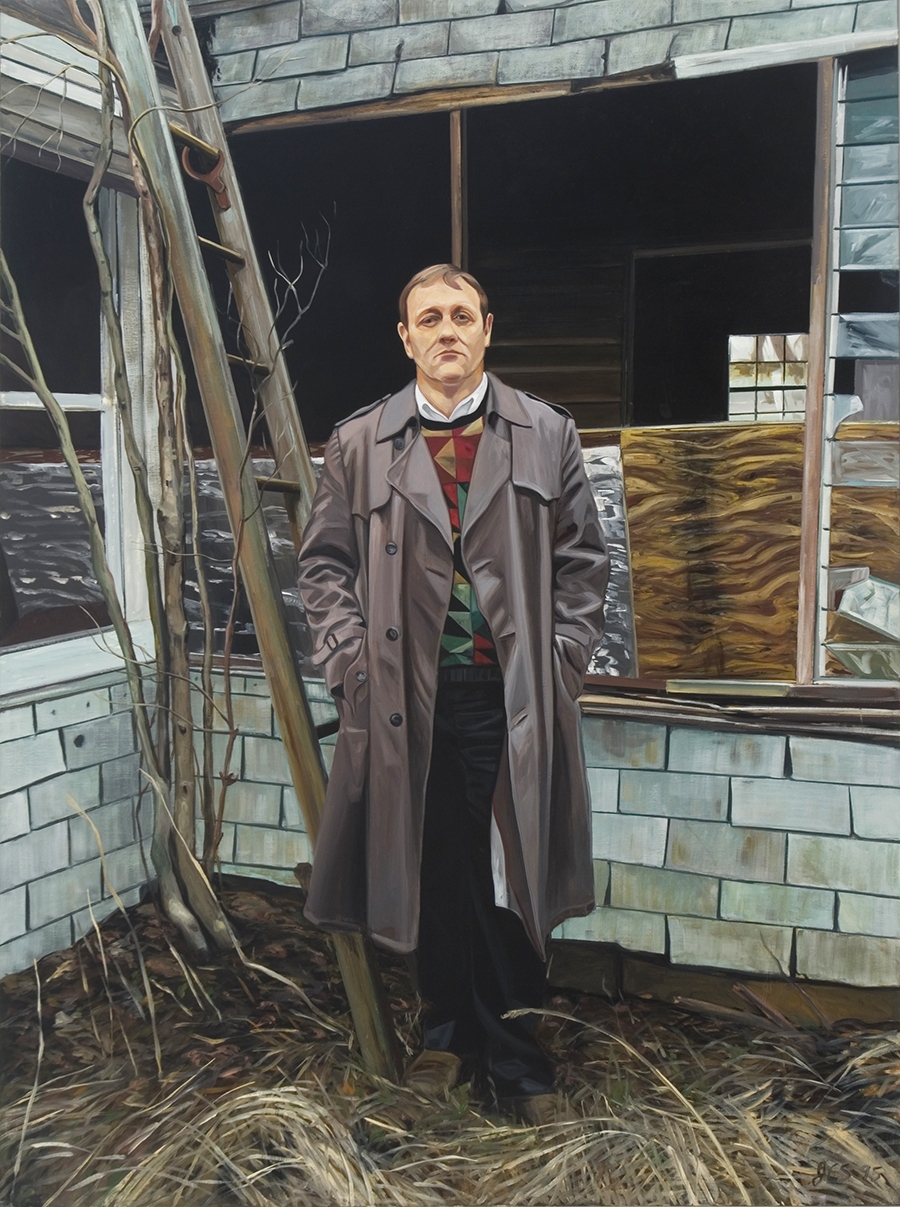A typical preview of an art exhibition might start out with a Cliffs Notes version of Art History 101 to set the scene.
But Jerome Witkin’s Poetry of Content: Five Contemporary Representational Artists, a traveling exhibition at the Kalamazoo Institute of Arts through Feb. 19, 2017, isn’t a typical show.
Like Witkin’s figurative style, it’s a break from dominant art tastes.
After a life of art education starting at age 14, Witkin received a Pulitzer Traveling Fellowship and left for Europe. Witkin later returned to the U.S., received a Guggenheim Fellowship, began exhibiting at galleries in New York, and joined the faculty of several universities before landing in 1971 as professor of painting in the School of Art at Syracuse University.
Witkin credits his single mother for encouraging his interest in the wellbeing of others and for taking him to the theater, where he was able to experience a variety of emotions through the careful creation of scenes with words and gestures on a stage.
Witkin brings both of these elements – wellbeing of others and emotion – to his canvas.
Once at Syracuse, Witkin says his style really solidified.
“It suddenly hit me to go back to my roots which are about people, and what people do with each other and to each other,” he said. “Even though figurative art was not the place to be, I didn’t care. I cared (that) I could really feel for my subject matter, and the abstract marks and color that did or did not appear became somehow trite and unimportant to me.”
So when Syracuse University Art Galleries offered Witkin the chance to co-curate a show based on living American artists he thought were significant, he readily agreed. It is no surprise, given Witkin’s strong feelings about art’s purpose, that Poetry of Content showcases other artists working in contemporary representational drawing, painting and printmaking.
“(My) work raises the issues of how to make content in work and I think there is so much so-called art that is lacking in any content,” Witkin said. “I like the feeling of my work to inject into the viewer, like a kind of drug, like they get the feeling of it right away.”
Of the five artists Witkin chose for Poetry of Content, he says they are “hitting some poetics, which are very discussable and bridgeable, that are reachable to other people. I think those people should be seen.”
Witkin knows each of the artists personally. He showed at the same gallery with Robert Birmelin in the ’80s. Witkin taught briefly at Cornell University, at which time Gillian Pederson-Krag also taught there. During his first year at Syracuse, Witkin met Joel Sheesley. He knew of Tim Lowly before meeting him in person at Lowly’s home and studio in Chicago. Witkin fondly calls Bill Murphy a poet.
There are no flings of paint (a la Jackson Pollock) or bright blocks of shapes (a la Ellsworth Kelly) here — no novellas explaining the artists’ intent to give a viewer clues about how to view something.
No, these five artists have experienced life, and the viewer is invited into that experience, to pause, reflect and gain understanding.
Definitions
Representational art: Forms and compositions that are clearly recognizable for what they purport to be, such as a house, an animal, a person, etc. Usually encompasses the very academic or traditional focuses on line, drawing and color.
Non-representational art: Any image that is not directly associated with any recognizable object and must therefore be interpreted entirely by the viewer. A more subjective approach to art — the veneration of form over substance.
The art is immediately recognizable and accessible — a woman here, a table setting there. But the care of compositions, the use of perspectives, and the arresting looks are what draws one in.
The KIA Interim Curator of Exhibitions Karla Niehus perhaps sums it up best.
“Approaching these paintings really is like approaching a poem,” she said. “There are recognizable elements, but there’s something ambiguous about each scene. This blending of the familiar with the enigmatic results in imagery that is initially accessible, but also open to personal interpretation by the viewer.”
Each of the artists were allowed to give relatively short statements about their work, what drives them, and what representational art means to them.
Birmelin’s statement said that he can’t explain his work relative to current trends and instead borrows Giacometti’s line, “The object of art is not to reproduce reality but to create a reality of the same or greater intensity.”
That’s fitting for a man whose four-panel acrylic work The Overpass so drew this writer in with its intense perspective. (I truly thought for a moment that I was standing so precipitously close to the railing in the painting that my fear of heights and vertigo kicked in, forcing me to take a step back.)
Toward the end of the exhibition hangs Witkin’s statement as the co-curator. It’s where he claims these artists offer depth in a time where many instead choose shallowness and brand awareness for their creations, how “all five strive for some level of mystery and poignancy in our lives, travels, and losses.”
Poetry of Content: Five Representational Artists
Kalamazoo Institute of Arts
314 S. Park St., Kalamazoo
Through Feb. 19, 2017
$5 adults, $2 students, free for ages 12 & under and KIA members
kiarts.org, (269) 349-7775





